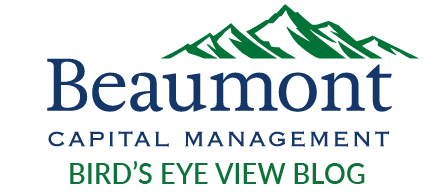ECONOMICS & INVESTING

Investment Losses in Terms of Percentage, Time and Dollars
What is risk? How do you measure it? In investing, risk can mean a lot of things to a lot of people. Industry professionals would typically answer volatility (VIX), standard deviation, Sharpe ratio, beta, and the list goes on. While those are technically correct, as money managers, we have to think like investors. What does “risk” mean to them?

Who’s Who in Economics and Finance
Who defines the world of finance and economics today? Between the market-trend tweeters (do people still talk about Bitcoin?), hedge fund managers, the on-air entertainment reporters on CNBC, and stock-picker bloggers, there is no shortage of people to keep track of in the industry.

Factor Investing in the 2019 Landscape
Factor investing has become one of the fastest growing investment approaches in asset management, experiencing 11% organic asset growth per year since 20111. However, factor investing is certainly not new, and while the factor investing landscape may be evolving and gaining popularity, asset managers have been using this approach for over half a century.

It’s Time to Talk About the R-Word
As we frequently like to point out, no one knows what will happen to the markets or the economy over the short term. Not tomorrow, next week, next quarter or even next year. But we do need to face reality. The bull market that we have enjoyed since 2009 is the longest in history.

The Anatomy of a Bear Market
What does a typical bear market look like? How long do they last? When are the majority of the losses incurred? Most investors believe that the losses occur fairly evenly throughout the Bear. Based on the past, with one notable exception, nothing could be further from the truth.

Are you wearing rose colored glasses? Take them off and you might see Bifurcated Markets, Tariffs, and Tempered Earnings Expectations
Over the past year we’ve started to wonder whether U.S. investors are beginning to view the world through a pair of rose colored glasses. If one doesn’t look too critically and restricts their gaze to the U.S. alone, they’d certainly see a “rosy” picture. Strong revenue growth, and continued margin expansion combined to fuel great earnings across the board in the second quarter for U.S. companies.

Factor Investing: Smart Beta Pursuing Alpha
In the spectrum of investing from passive (index based) to active management there are no shortage of considerations. Passive tends to be cheaper and should deliver returns very close to the index it tracks, which is great in up markets, less so in down markets. Active tends to be more expensive and relies on the skill of the portfolio manager(s) to deliver desirable results.

A Final Call Before the Fall
We have enjoyed the current bull market which recently surpassed the 1990-2000 technology-led bull as the longest bull ever. Hopefully you have been invested and enjoyed the benefits of this bull market, a most welcome market after the devastation of 2007-2009, nearly a decade later.

Excuse the rant…this isn’t about politics, it’s about economics.
With all due respect to our President, I vehemently disagree with him on the use of tariffs. As the administration charges on with the trade war, they continue to cite our trade deficit with Canada as a catalyst/driving force. “Fake news” aside and contrary to the President’s statements, as we wrote in our white paper on trade back in June, we actually have a trade SURPLUS with Canada.

Active Management May Be on the Rise Over Passive: But Active vs Passive is the Wrong Debate
Following the 2007-2009 bear market, passive management, specifically index investing, was given the opportunity to thrive. Coming off the lows of a brutal bear market, the S&P 500 and other large cap indices thrived in an environment of easy monetary policy and quantitative easing. Many years of this 9+ year bull market experienced low or extremely low volatility leaving little room for active managers to squeeze out excess returns or alpha.
